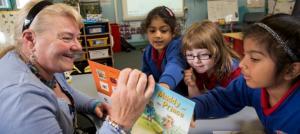Australia: Disadvantaged students hit by resource shortages
Gaps in resources in Australian schools hits disadvantaged students in particular. This is just one finding from the expanded versions of the Organisation for Economic Co-operation and Development’s Programme for International Student Assessment (PISA) and the International Association for the Evaluation of Educational Achievement’s Trends in International Mathematics and Science Study (TIMSS). The in-depth versions of the PISA and TIMSS reports compare the performance of school systems across developed countries.

“The new data confirms that the gap in results between students from advantaged and disadvantaged backgrounds in Australia is the equivalent of around three years of schooling,” highlighted Correna Haythorpe, Federal President of the Australian Education Union (AEU). It also shows “the dramatic gaps in resources” that are contributing to this, she noted. “How can these students be expected to achieve when they are in schools that don’t have the basic resources for their education?”
Specific disadvantage
The data illustrates how the education deficit is linked to resource shortages in schools which educate disadvantaged students. Indeed, Haythorpe said school leaders reported that:
· 55 percent of students attended schools where maths teaching was affected by a lack of resourcing
· 69 percent attended schools where science teaching was affected
· 34 percent of low-Student Experience Survey (SES - the only comprehensive survey of current higher education students in Australia) students were at schools where inadequate infrastructure hindered their capacity to provide instruction, compared with 12 per cent of high-SES students
Australian students in the lowest SES-quartile are six times more likely to be in schools with shortages of qualified teachers or support staff, data shows. “This is a stunning demonstration of how under-resourced our schools are and how these shortages add to the barriers facing disadvantaged students,” Haythorpe said.
Gonski
She also emphasised that the plan of Australia’s Prime Minister, Malcolm Turnbull, “to scrap Gonski needs-based funding after 2017 means that many schools will never reach the resource standard they need for their students”. Turnbull needs to abandon his plan to scrap Gonski after 2017 and give schools the full investment of six years of targeted funding, so that all schools can reach the minimum Schooling Resource Standard which the Gonski Review recommended, she urged.
Haythorpe highlighted how previous PISA reports show that school systems with more equitable funding distributions perform better overall.
Source: Education International
- 454 reads
Human Rights
Fostering a More Humane World: The 28th Eurasian Economic Summi

Conscience, Hope, and Action: Keys to Global Peace and Sustainability

Ringing FOWPAL’s Peace Bell for the World:Nobel Peace Prize Laureates’ Visions and Actions

Protecting the World’s Cultural Diversity for a Sustainable Future

Puppet Show I International Friendship Day 2020

